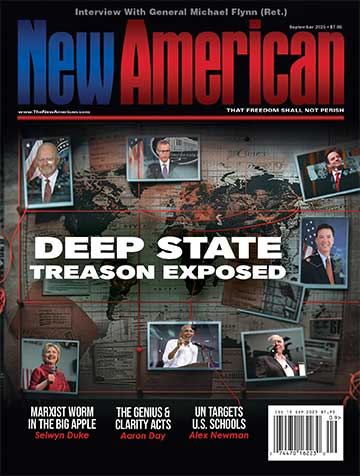According to an article at MSNBC.com entitled “Doomsday Clock set back one minute,” the Doomsday Clock, an “end-of-the-world clock, set up in 1947, … meant to convey how close we are to the end of the world via catastrophe caused by nuclear weapons or climate change, among other factors,” had its hands moved on January 14 from five minutes before midnight (“midnight” means catastrophic destruction) to six minutes before midnight.
This signals the fact that the Bulletin of Atomic Scientists at the University of Chicago, which monitors the clock, sees a change in the actions of the world’s people that causes the scientists to be optimistic about the prospects for people on Earth — meaning humans are slightly less likely (in their opinion) to destroy mankind or the Earth, or both, than we were before.
Of course, despite how the clock is now described, climate change had nothing to do with the establishing of the Doomsday Clock in 1947. The clock was initially meant to advertise how close humans were to ending the world through nuclear war. It was designed as political theatre — intentional scaremongering to warn against the development and use of nuclear arsenals. The clock started at seven minutes to midnight, and actually reached two minutes to midnight in 1953 when both the Soviet Union and the United States tested nuclear devices within nine months of each other.
And that’s all the clock still stands for now, political theatre, the opinion of some academics, and scaremongering. According to the MSNBC article, the clock was reset because of “signs of a growing political will to tackle the two gravest threats to civilization — terror of nuclear weapons and runaway climate change." The clock does not get reset based on science per say, though it does reflect the fear that new scientific advances in areas such as nanotechnology may be used to destroy the world. In this case, the scientists are postulating about people’s “political will.”
The scientists could actually make the clock somewhat useful and base its setting on scientific knowledge and scientific discoveries. For instance, they could have changed the clock to 11:30 p.m. when the Climategate e-mails emerged showing that global-warming alarmists were manipulating data to get the results they wanted, acknowledging that there is less to worry about from climate change than was thought. And they could have changed the clock to 11:00 p.m. when Russia discovered, as The New American’s Alex Newman reported, “that the prestigious Hadley Center at the U.K. Met Office had been cherry-picking temperature data provided by Russian stations, using only the 25 percent of stations that showed warming while ignoring the rest.” Both the Climategate scientists and the Hadley Center provided the data upon which the UN’s IPCC makes its predictions of global climate catastrophe.
To be more useful yet, the scientists could also rethink their Pollyannish view of world politics: The scientists seem to believe that totalitarian countries like Russia and China will get rid of their nuclear stockpiles if the United States does so — despite the fact that both countries play by their own rules and have indicated that they are improving upon their nuclear weapons.
And what about countries that haven’t signed the Nuclear Nonproliferation Treaty, such as North Korea, Iran, Pakistan, and India; does anyone really believe that they will get rid of their nuclear programs?
The Doomsday Clock could, in referring to nuclear arsenals, also be more useful if were based on the likelihood that countries would use their nuclear weapons. As it stands now, it would seem that the leaders of the United States and Russia are highly unlikely to use nuclear weapons — at least against each other — because of the concept of mutually assured destruction. What happens if nuclear arsenals are depleted to a point where a nation such as Russia or China thinks it could actually win a war using nuclear weapons?
Maybe the Clock could also be set based on countries’ new defensive measures, those meant to rebuff nuclear missile attacks — again detracting from the likelihood that countries will use their nuclear weapons in a hostile manner.
But the Clock is definitely not keeping accurate time now.
In truth, the Clock is just a way of getting people to take a certain point of view because the logic and facts available to back the view aren’t sturdy enough to sway a populace. So “tick, tock” get working on that Clock — or just throw it in the trash already.




